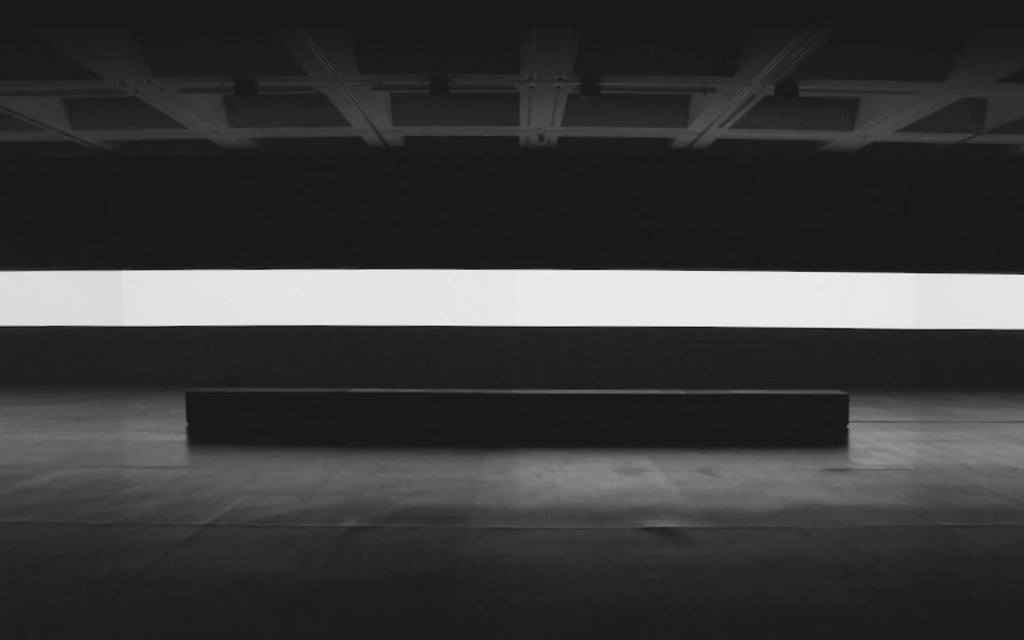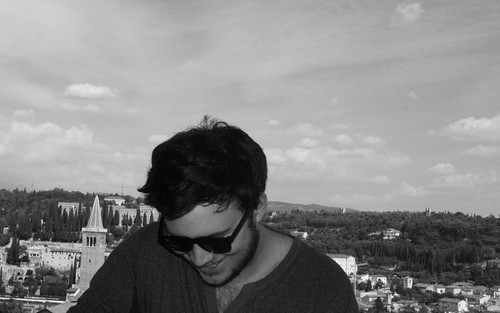Unicolor // Carsten Nicolai

Brewer Street car park is becoming something of an unlikely institution in the world of audiovisual arts. Yes, largely as you might expect the building is just a car park, however the top floor plays host to a rotating series of exhibitions, free and completely open to the public. Across May Ryoji Ikeda held his 'Supersymmetry' installation there, drawing on his work as a resident at the European Organization for Nuclear Research (CERN) in 2014 to present an audiovisual interpretation of a theory attempting to explain why particles have mass. For the past month, it has been the turn of one of Ikeda's closest connections in electronic music and another musician drawing similar influence from science and mathematics to take over the space, Raster Noton founder Carsten Nicolai.
Nicolai is no stranger to audiovisual installation work, previously displaying pieces at the Tate Modern in London, the Neue Nationalgalerie in Berlin, and Haus Konstruktiv in Zurich just to name a few. His exhibition on Brewer Street features two separate installations - 'Bausatz-Noto' (1998) and 'Unicolor' (2014). The former sees four turntables playing together with a series of interchangeable records. Each is cut with a different locked groove, allowing for a mesh of warped grooves and avant-garde timbres to be played continuously in different speeds and combinations. The piece finds a fitting home at Brewer Street - the purpose of the experiment in part being to allow people of all ages, from musical and non-musical backgrounds to participate in the creation process.
The primary focus of Nicolai's tenancy at the venue however, is 'Unicolor'. The piece follows on from two previous works, 'Univrs/Uniscope Version' (2010) and 'Unidisplay' (2012), which experimented with the laws of perception. 'Unicolor' takes on an experiment of a different nature, playing with our perception of colour specifically. Different primary tones are placed against one other; modulating at times painfully slowly, at others strobing intensely. The piece is an extention of Nicolai's interest in Goethe's 'Theory of Colours', displaying how our brains fill gaps in perception. Staring at a solid tone for an extended period for example triggers the complementary colour in our vision when we look away.
Adding to the experience is the fact that Nicolai's display spreads infinitely in either direction, mirrors reflecting the panel of colours into an alluring panorama. Nicolai's crystal clear drones are expectedly befitting of the experience, the visual elements having a corresponding effect on what you hear. Aside from the scientific implications, the overall effect is incredibly magnetic, drawing you into an abstract world of sterilized sound and light which doesn't require much understanding to be thoroughly enjoyable.
As Nicolai himself said during an interview with The Vinyl Factory: "this piece is not trying to teach people something. The modules are triggers for the imagination. I want to test how aware we are of the reality that we unconsciously create."
The exhibition is open daily (12-6pm except Mondays) and runs free of charge until August 2nd.
- Published
- Jul 27, 2015
- Credits
- Words by Theo Darton-Moore
